Transforming the Industry with Intelligent Resource Strategies
Artificial Intelligence (AI) resource planning is revolutionizing the ai and engineering (A&E) sectors by enabling firms to optimize workflows, improve project outcomes, and foster innovation. As AI tools become more accessible and sophisticated, understanding their implications and applications is critical for industry professionals aiming to stay competitive and sustainable in a rapidly evolving landscape.
Defining AI Resource Planning in ai and Engineering
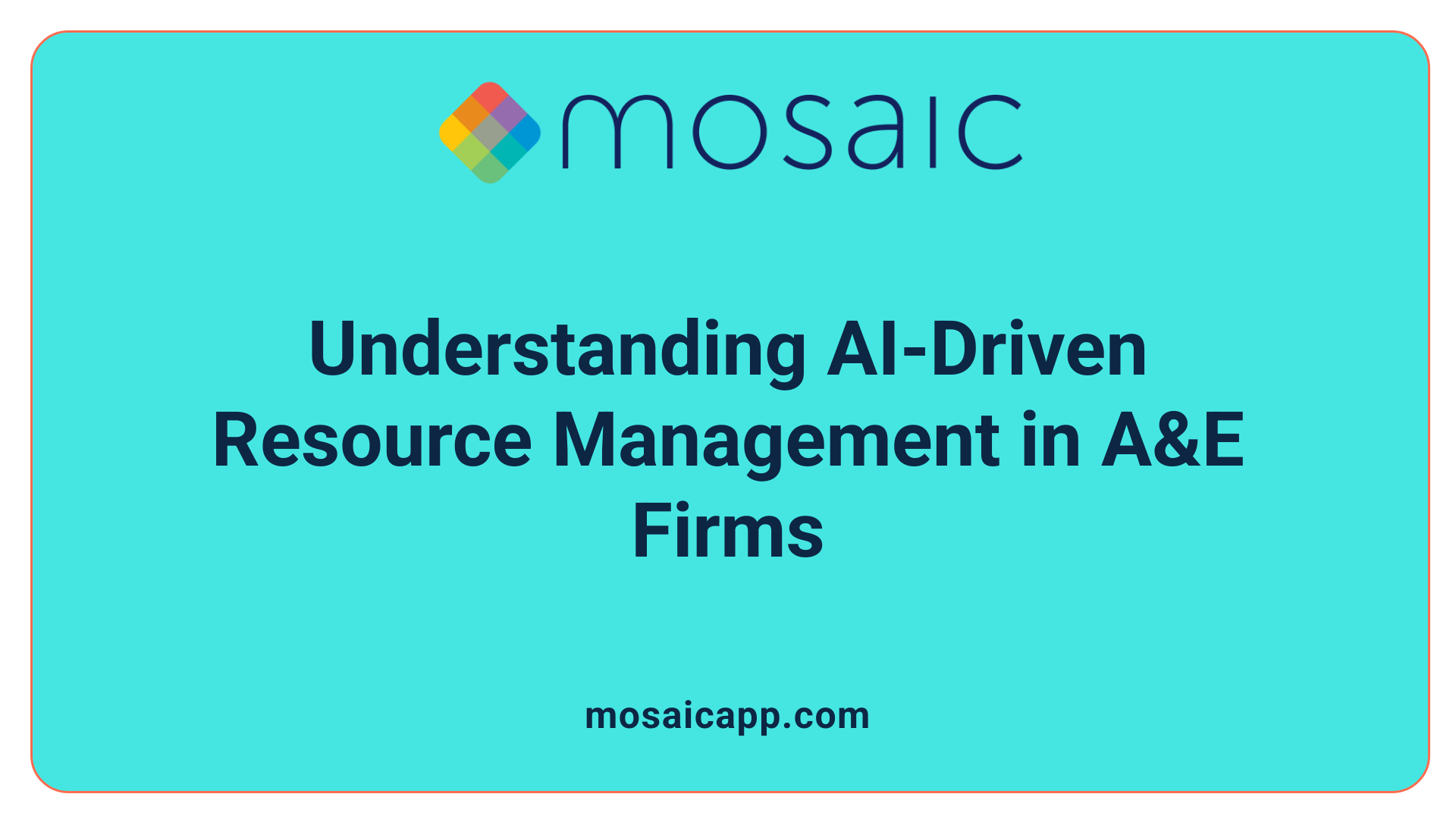
What is AI resource planning specifically for ai and engineering firms?
AI resource planning in A&E firms involves utilizing artificial intelligence technologies to manage and optimize the way project resources are allocated. This includes personnel, materials, time, and budgets, with the goal of making workflows more efficient and improving the overall success of projects.
By applying AI, firms can automate complex tasks such as early project qualification, proposal generation, and scheduling. For instance, AI tools like ProjectMark include features for managing pipelines, opportunities, and bids, providing insights that help in strategic decision-making. AI systems can analyze large datasets to predict project needs, identify risks, and optimize resource distribution.
Moreover, AI helps in designing more sustainable and cost-effective solutions by real-time data integration from design, cost estimation, and compliance sources. This allows firms to respond quickly to changing project demands or market conditions. As a result, AI resource planning supports smarter decision-making and resource utilization, leading to improved project outcomes and minimizing manual work.
What tools and systems are involved in AI resource planning?
Effective AI resource planning depends on a range of advanced tools and systems. Cloud-based platforms like ProjectMark offer CRM, project management, and proposal automation features. These systems often include AI assistants, such as Bolt, which automate repetitive tasks, streamline client communication, and generate data-driven insights.
Specialized AI modules are integrated within design and planning software like Autodesk Forma, which enables real-time site analysis, zoning checks, and urban planning simulations. Cost estimation tools like Kreo utilize machine learning to achieve high accuracy, reducing bid errors and financial risks.
Additionally, project scheduling and resource allocation are optimized using platforms like Monograph, which employ AI to forecast workforce needs and resource utilization trends. AI-enabled analytics provide detailed performance insights, helping firms make informed choices about project scope, staffing, and timelines.
What are the core functions and objectives of AI resource planning?
The main goal of AI resource planning is to unify different aspects of project management into a cohesive, intelligent framework that enhances productivity.
- Project Qualification: Quickly identifying viable projects using AI analysis of market data and past performance.
- Proposal Automation: Streamlining bid and proposal creation, reducing turnaround times.
- Scheduling and Optimization: Using predictive analytics to allocate manpower and materials efficiently.
- Cost Management: Improving bid accuracy through machine learning-based estimations.
- Talent Development: Identifying skill gaps and training needs by analyzing staff performance and project requirements.
Ultimately, these systems aim to reduce manual effort, eliminate inefficiencies, and improve decision speed and accuracy. This enables firms to react proactively to project challenges, better control costs, and enhance overall competitiveness. As AI continues to evolve, its role in resource planning will expand, integrating more data sources and generating smarter insights to support sustainable and innovative project delivery.
Current Adoption Rates and Demographics
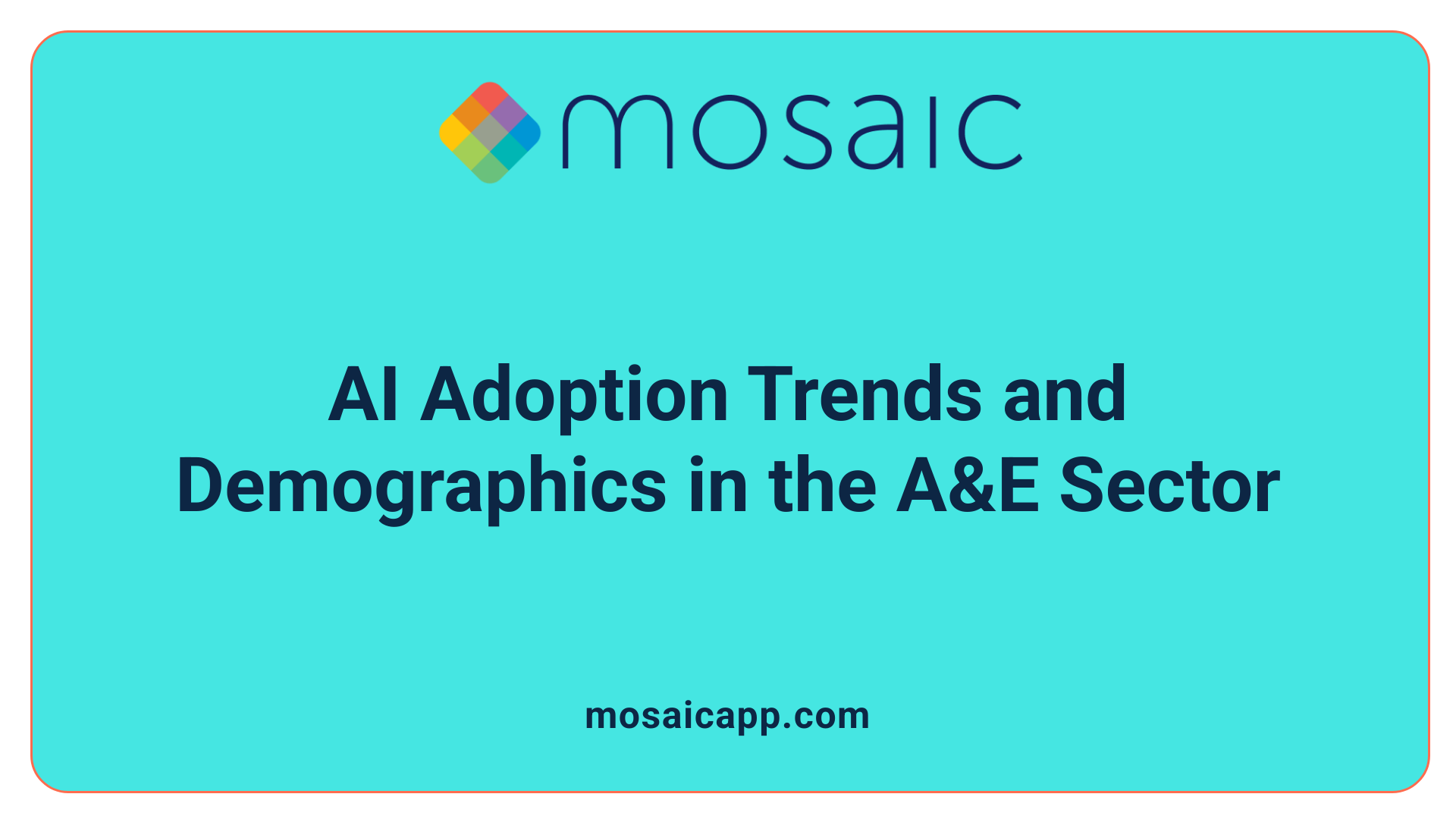
What are current trends, perceptions, and opportunities related to AI in ai and engineering?
The adoption of artificial intelligence in ai and engineering is growing rapidly, although at a modest current rate. Only about 6 percent of professionals use AI regularly, but nearly 20 percent of firms are actively working on its implementation. Larger firms, those with more than 50 employees, are more likely to have adopted AI solutions, benefiting from their greater resources and capacity for experimentation.
Younger professionals, especially those aged 50 or below, are more inclined to experiment with AI tools such as image generators and chatbots, showing a trend toward integrating these technologies into everyday workflows. This younger demographic tends to view AI more favorably, recognizing its potential to enhance creativity and efficiency.
Recent industry surveys, including one by RIBA, highlight that 41 percent of practices have already incorporated AI into their processes, mainly for design ideation, visualization, and administrative tasks like report writing or summarizing ideas. Despite the slow overall adoption rate, many firms plan to increase their investment in AI—76 percent of AECO organizations are considering expanding their use of emerging technologies.
Perceptions among professionals are mixed; around one-third see AI as a potential threat, mainly due to concerns about inaccuracies, misuse, and security risks. Another third view AI as a valuable tool that complements human decision-making, especially in areas like building regulation compliance and project optimization.
Opportunities for AI include developing advanced tools such as Text-to-BIM, real-time environmental analysis, and 3D form generators, which could significantly boost productivity and innovation, especially for smaller practices. AI's integration into project management, sustainability assessments, virtual reality experiences, and client engagement is seen as a promising way to make the design and construction process more sustainable, cost-effective, and responsive.
In sum, while adoption is still emerging, the industry recognizes AI’s transformative power. As technology matures, we can expect to see broader, more strategic integration, fostering a more innovative and efficient built environment.
Key Benefits and Implications of AI-Driven Resource Planning
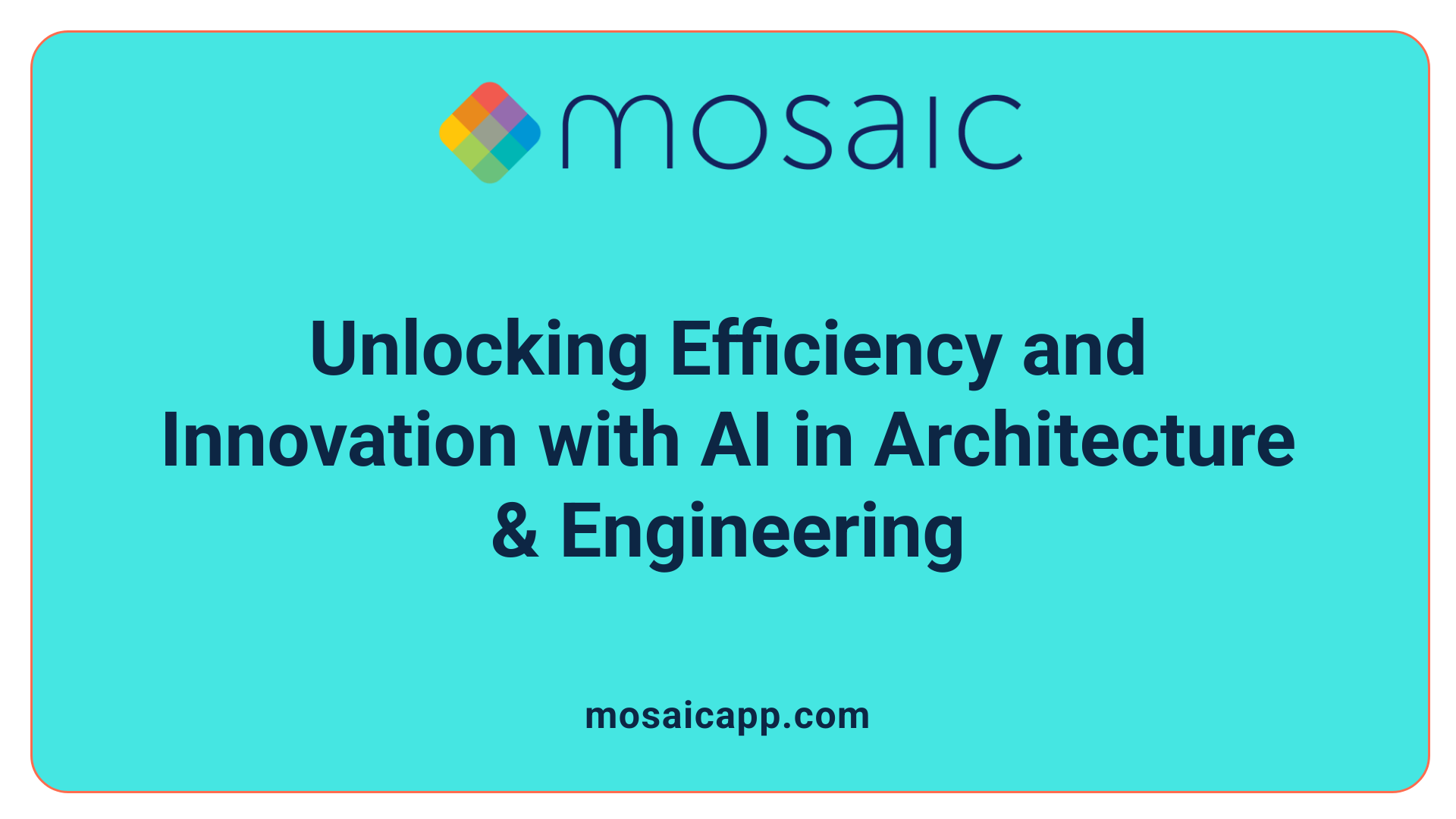
What are the benefits and implications of AI resource planning for ai and engineering firms?
AI resource planning brings transformative advantages to ai and engineering practices. One of the most immediate benefits is the significant increase in efficiency. AI automates manual, time-consuming tasks like drafting, clash detection in design models, scheduling, and resource allocation. This automation frees up valuable human resources, allowing firms to focus more on creative problem solving and innovative design rather than repetitive administrative work.
Beyond workflow improvements, AI enhances decision-making processes. Through predictive analytics, AI tools can forecast material requirements, estimate potential project delays, and identify opportunities to reduce costs. These insights enable project managers to make informed choices early in the process, reducing unforeseen risks and improving project outcomes.
AI also fosters better collaboration among project teams. Centralized data repositories and real-time communication tools streamline information sharing, ensuring that all stakeholders are aligned. This cohesive approach minimizes misunderstandings and keeps projects on track.
Furthermore, AI plays a vital role in promoting sustainable practices. It can optimize the use of resources by simulating different design scenarios to improve energy efficiency and environmental performance. Material and layout recommendations based on AI analyses can significantly lower a project's carbon footprint.
These benefits collectively position AI resource planning as a strategic asset. Firms that deploy AI technologies can adapt more swiftly to changing project demands and regulatory standards, boosting their competitiveness and client satisfaction in a dynamic industry. As a result, AI is not just a tool for efficiency but also a catalyst for innovation, resilience, and long-term success in the ai and engineering sectors.
Enhancing Business Development Through AI
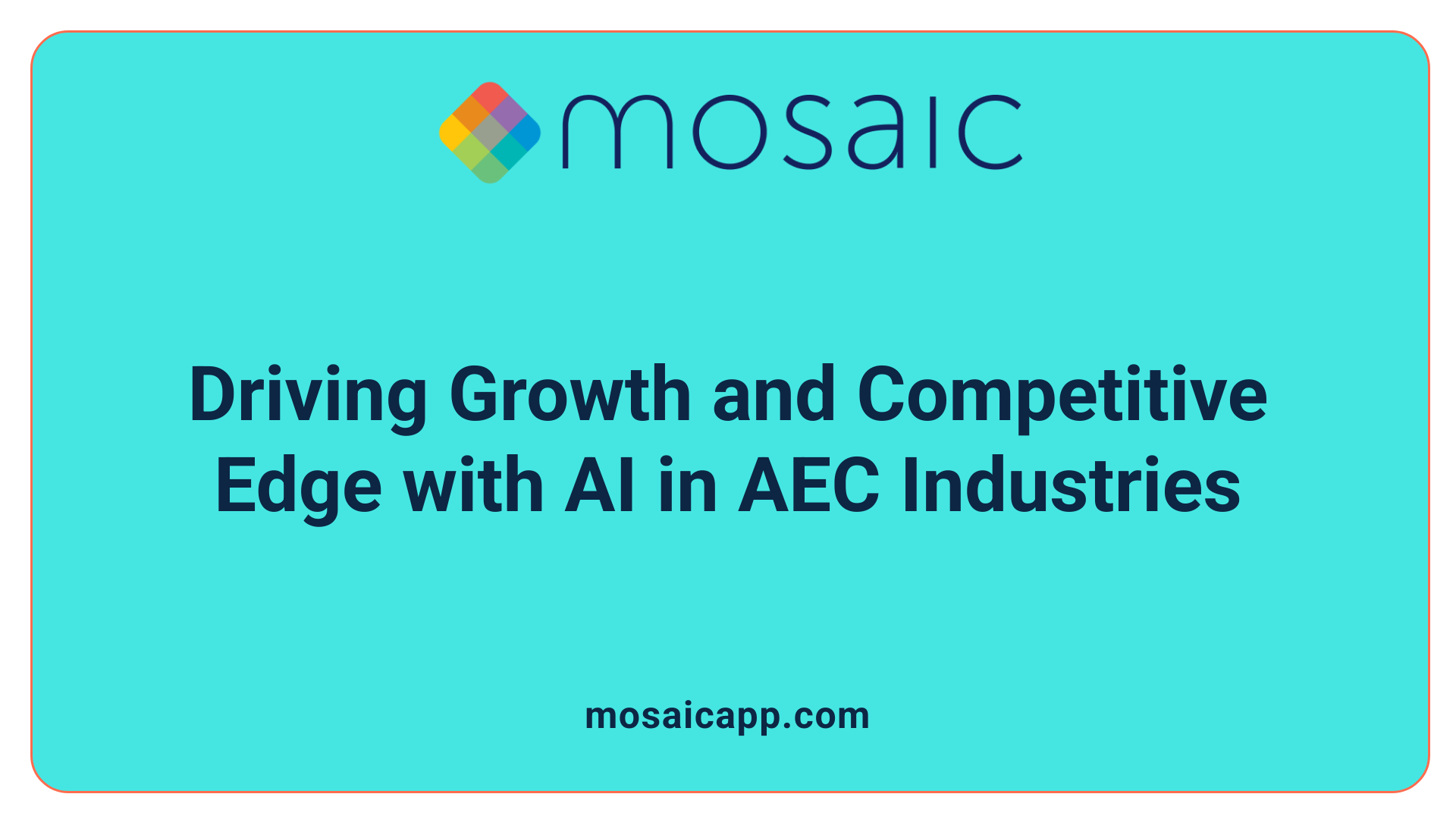
AI plays a growing role in transforming how ai, engineering, and construction (AEC) firms grow and compete. One of the most noticeable impacts is in proposal automation. AI-powered platforms like ProposalAI and OpportuneAI streamline the bid process by quickly analyzing RFPs, extracting relevant details, and creating compliant drafts. This reduces time spent on manual tasks, allowing teams to focus on crafting compelling proposals and increasing win rates.
Market analysis is another area where AI adds value. Through advanced data analytics, firms can forecast industry trends, identify emerging markets, and spot new opportunities early. These insights help firms position themselves strategically, adapt offerings, and expand into high-potential sectors.
Client engagement also benefits significantly from AI integration. Tools provide clients with real-time, data-driven visualizations, immersive virtual reality experiences, and transparent reporting, fostering trust. AI-driven communication platforms personalize client interactions and ensure prompt, accurate responses.
Larger firms with over 50 employees are more likely to have already adopted AI solutions, while smaller practices are increasingly benefiting from accessible AI tools. As AI continues to evolve, more firms see it as an essential driver for innovation, efficiency, and competitive advantage, supporting sustainable growth in a rapidly changing industry.
AI Application Function Impact ProposalAI Automates proposal writing Speeds up bid process, improves accuracy, and enhances win potential Market trend analysis Forecasts industry shifts Enables strategic planning and competitive positioning Data visualization & immersive tools Engages clients visually Builds trust and clarifies complex ideas CRM and project management platforms Streamlines workflows and client relationships Improves operational efficiency and client satisfaction Data analytics for bid success Provides performance insights Guides future business and marketing strategies
Overall, AI acts as a strategic tool for firms aiming to expand their market reach, improve proposal quality, and foster stronger client relationships, paving the way for sustained growth in the evolving AEC landscape.
Emerging Trends and Opportunities in AI
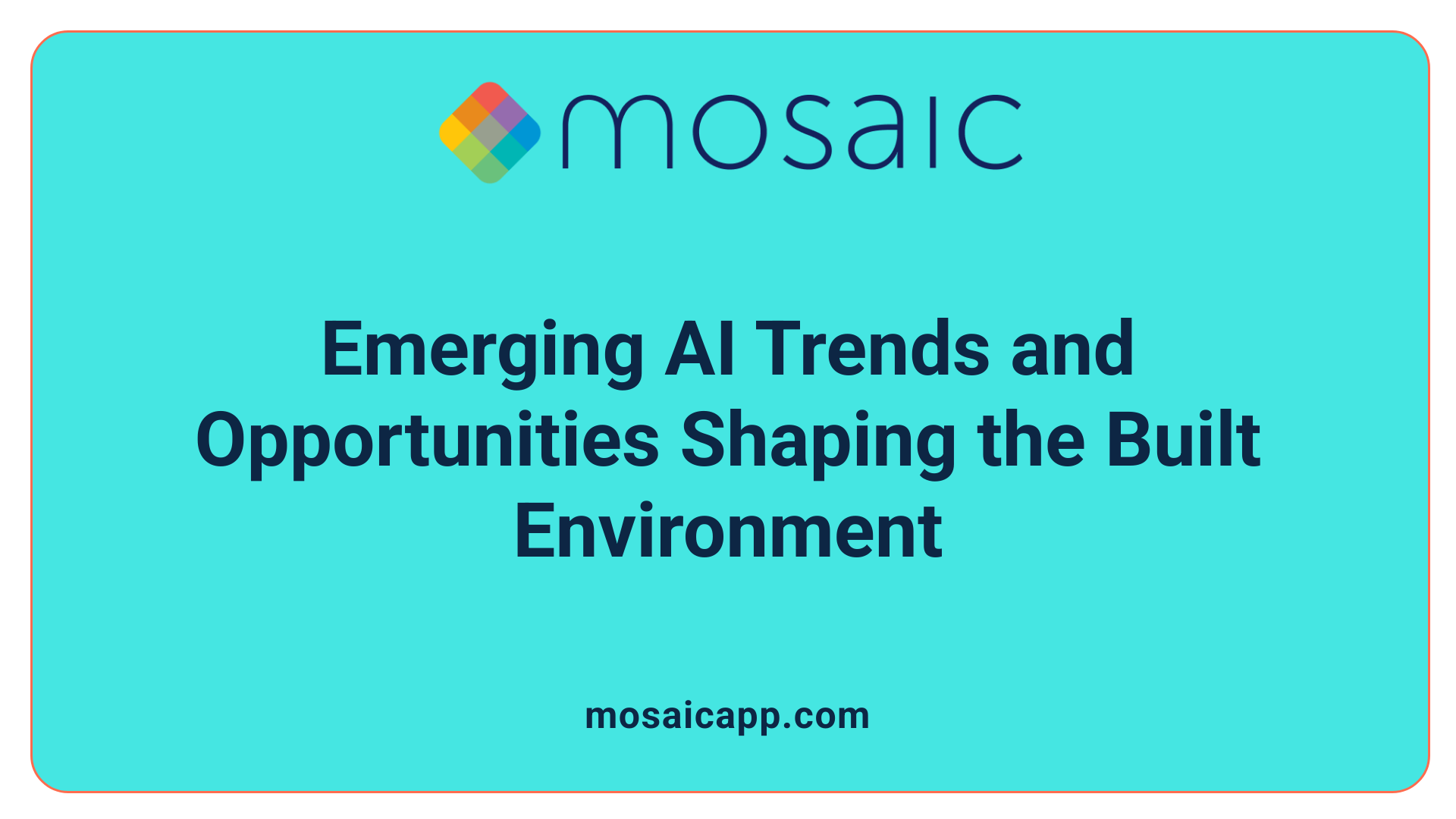
What are current trends, perceptions, and opportunities related to AI in ai and engineering?
The adoption of artificial intelligence in ai and engineering is gaining momentum, with a recent survey indicating that 41% of architectural practices have already integrated AI tools into their workflows. This figure is notable because AI applications have only been accessible for just over a year.
Architects primarily leverage AI for design ideation and visualization. Tools like Adobe’s Firefly AI engine enable generation of images from text prompts, aiding in visual storytelling. Generative design platforms such as Midjourney and D5 Render facilitate real-time stylistic iterations, helping architects explore multiple options swiftly.
Project management benefits include real-time updates within Building Information Modeling (BIM) systems, predictive maintenance, and resource planning. AI-powered cost estimators and scheduling tools improve precision and efficiency, reducing manual effort.
Perceptions among professionals are mixed. Approximately one-third see AI as a threat, mainly due to concerns over inaccuracies and misuse, while others view AI as an enabler of significant advancements. Many firms, especially larger ones, are developing proprietary AI solutions trained on their data, which streamlines workflows and enforces intellectual property rights.
Opportunities are broadening with innovations like text-to-BIM conversion, 3D form generators, and immersive VR/AR visualization, offering more detailed client engagement and faster project delivery. AI-driven digital twins and environmental analysis platforms are boosting sustainable design and regulatory compliance.
Despite the promising developments, adoption remains modest, with only 6% of professionals regularly using AI, though nearly 20% are in the process of implementing it. The trend indicates that smaller firms can benefit from these tools as well, leveling the playing field.
In summary, AI is transforming ai and engineering by enhancing creativity, efficiency, and sustainability. As technology evolves, these tools are expected to become integral to everyday practice, facilitating smarter, more responsive, and innovative built environments.
Aspect Description Additional Details Current Adoption 6-8% of professionals regularly use AI Larger firms more likely to adopt AI solutions Leading Applications Visualizations, generative design, project management Tools include ChatGPT, Midjourney, Forma Perceptions One-third see it as a threat, others see opportunities Concerns include accuracy, security, transparency Future Trends Text-to-BIM, 3D form generators, digital twins Potential for increased efficiency, sustainability Investment Intentions 76% of organizations plan to increase AI investment Focus on reducing project time and costs Challenges Need for responsible policies, verifying AI outputs Developing ethical guidelines and data security
Overall, AI's integration into ai is accelerating, offering vast potential for innovation while emphasizing responsible use and continuous development.
Use Cases and Practical Applications of AI Resource Planning

What are some use cases and applications of AI resource planning within ai and engineering firms?
AI resource planning is transforming how ai and engineering firms manage their projects, resources, and workflow. It spans multiple areas including design automation, cost and schedule management, quality control, compliance, and urban planning.
In design automation, AI-powered generative tools like Autodesk Forma, Midjourney, and DALL-E 2 quickly produce multiple conceptual sketches and massing studies. These tools enable architects to explore innovative options rapidly, drastically reducing the time from conception to finalized designs.
Cost and schedule management benefit from AI-enabled platforms such as Kreo and Monograph, which analyze historical data for precise cost estimation and resource allocation. AI-based scheduling tools optimize staffing, track utilization, and predict project delays, thus improving overall efficiency.
Quality control and regulatory compliance are enhanced using AI tools like UpCodes AI, which scans 3D models within Revit to automatically flag code violations in real-time. This reduces manual checking time from days to minutes, helps avoid costly revisions, and ensures adherence to standards.
Urban planning benefits from AI's ability to analyze complex site and zoning data. Tools like Autodesk Forma can evaluate urban constraints such as daylight access, airflow, noise, and zoning restrictions to generate compliant, viable building forms that harmonize with the environment.
Beyond project design, AI also supports operations through digital twins, BIM real-time updates, and predictive analytics for building performance and safety hazard detection. These applications contribute to more sustainable, efficient, and safer built environments.
The integration of AI into workflows is more prevalent among larger firms and younger professionals, with approximately 20% of firms actively implementing AI solutions. As AI technology advances—aiming towards text-to-BIM, 3D form generators, and real-time environmental assessments—firms of all sizes can leverage these tools to increase productivity, improve design quality, and maintain a competitive edge.
Application Area Examples Benefits Design Automation Generative design tools, image generators Rapid concept development, more options Cost & Schedule Management AI cost estimators, resource planning platforms Accurate bids, efficient resource use Quality & Compliance Code violation detection AI tools Reduced errors, compliance assurance Urban Planning Site analysis and zoning evaluation AI Sustainable, compliant urban design
Overall, AI resource planning offers a comprehensive toolbox that supports every stage of the architectural and engineering process, fostering innovation, sustainability, and operational excellence.
Future Outlook and Transformations in AI Resource Planning
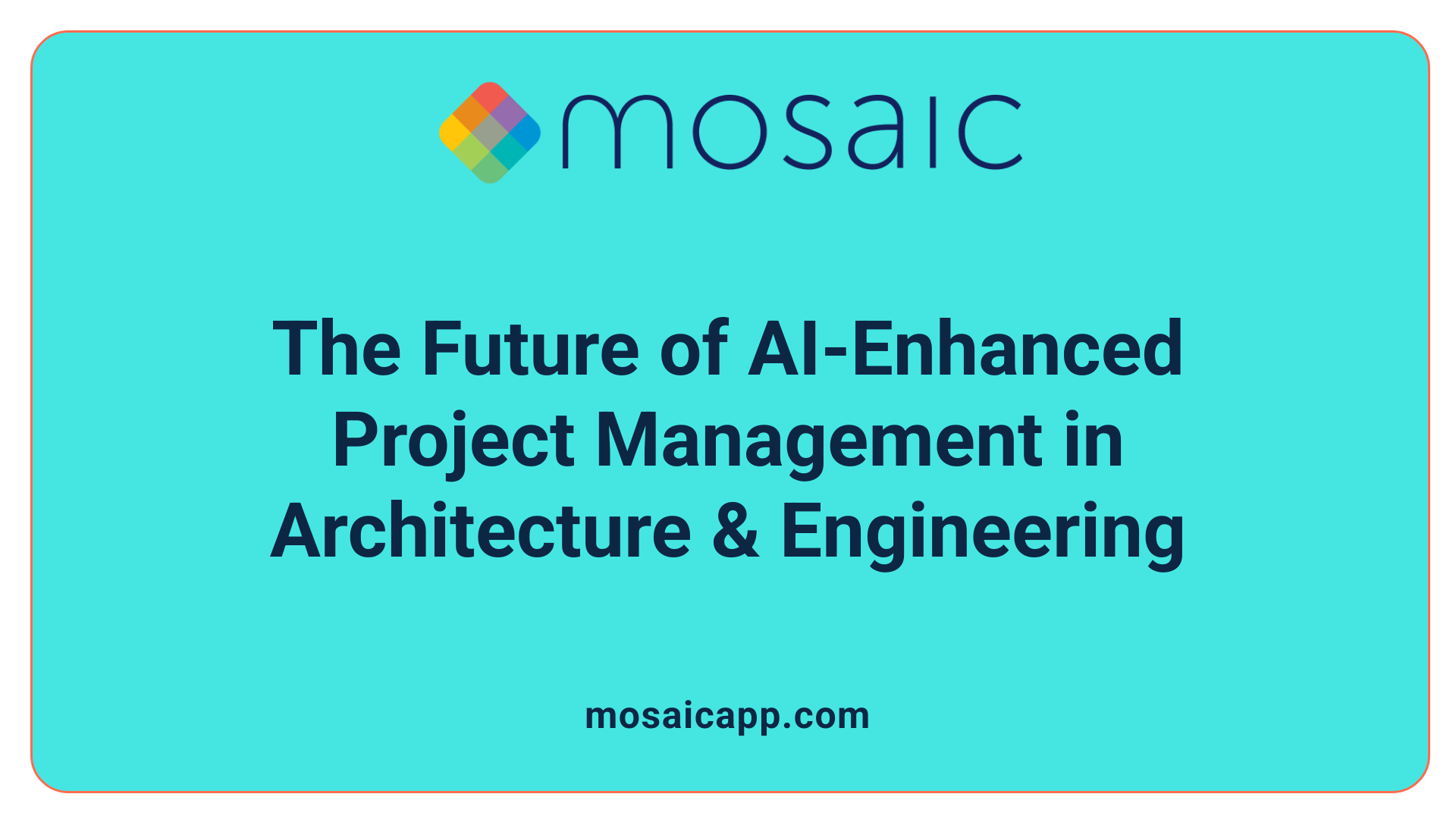
What future developments and impacts can be anticipated from AI resource planning in the ai and engineering industries?
The future of AI in architectural and engineering resource planning promises significant advances that will reshape how projects are managed and executed. One of the most anticipated developments is the rise of autonomous project management systems. These systems could oversee entire project workflows, managing schedules, budgets, resources, and compliance automatically, reducing human error and increasing efficiency.
As design tools become more sophisticated, AI-driven generative design and simulation platforms will enable rapid creation and testing of innovative, sustainable structures. These platforms will optimize building layouts for energy efficiency, environmental impact, and material use, helping practices meet stringent sustainability goals.
Integration with digital twins, the Internet of Things (IoT), and augmented or virtual reality (AR/VR) will enhance lifecycle management. Real-time data from building sensors can be used to monitor performance, predict maintenance needs, and adapt building operations dynamically.
Over the next decade, AI's capabilities may extend even further. We could see AI automatically generating detailed building designs from vast stores of precedent data or real-time cost and performance analysis during early project stages. Eventually, AI-driven fabrication might produce physical components directly from digital models, streamlining construction.
These advancements will greatly improve project delivery times, boost operational efficiency, and promote sustainable building practices. Overall, AI will enable ai and engineering firms to develop smarter, more adaptive, and highly integrated workflows that benefit clients, the environment, and industry standards.
Development Area Expected Impact Additional Notes Autonomous systems End-to-end project oversight Managing schedules, budgets, and compliance Design innovation Rapid exploration of sustainable options Enhancing environmental performance Lifecycle management Real-time operational adaptations Using IoT and digital twins Fabrication Automated physical production From digital models directly to construction Risk and cost analysis Improved accuracy Real-time data informing design decisions
This evolving role of AI will transform traditional project management into a streamlined, intelligent process, fostering more sustainable and efficient architectural practices.
Embracing AI to Shape Future Skylines
The integration of AI resource planning into ai and engineering is set to revolutionize how projects are conceived, designed, and managed. With continuous technological advancements, firms that proactively adopt and ethically implement AI will gain significant competitive advantages, improve sustainability, and drive innovation. As AI becomes a core component of built environment professions, embracing these technologies will be essential to shaping smarter, more efficient, and adaptive cities of the future.
References
- Artificial Intelligence: how are architects using AI right now ...
- AIA research explores AI in ai
- Why Architectural and Engineering Firms Need AI Ground ...
- How AI in ai is shaping the future of design, ...
- How AI helps AEC firms win more work with less effort
- AI for ai: 7 Transformative Use Cases
- 5 Ways AI Can Elevate ai Firms
- Top 5 AI Tools Driving Innovation in ai and ...
- AIA research explores AI in ai
- Artificial Intelligence: how are architects using AI right now ...


